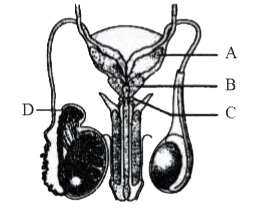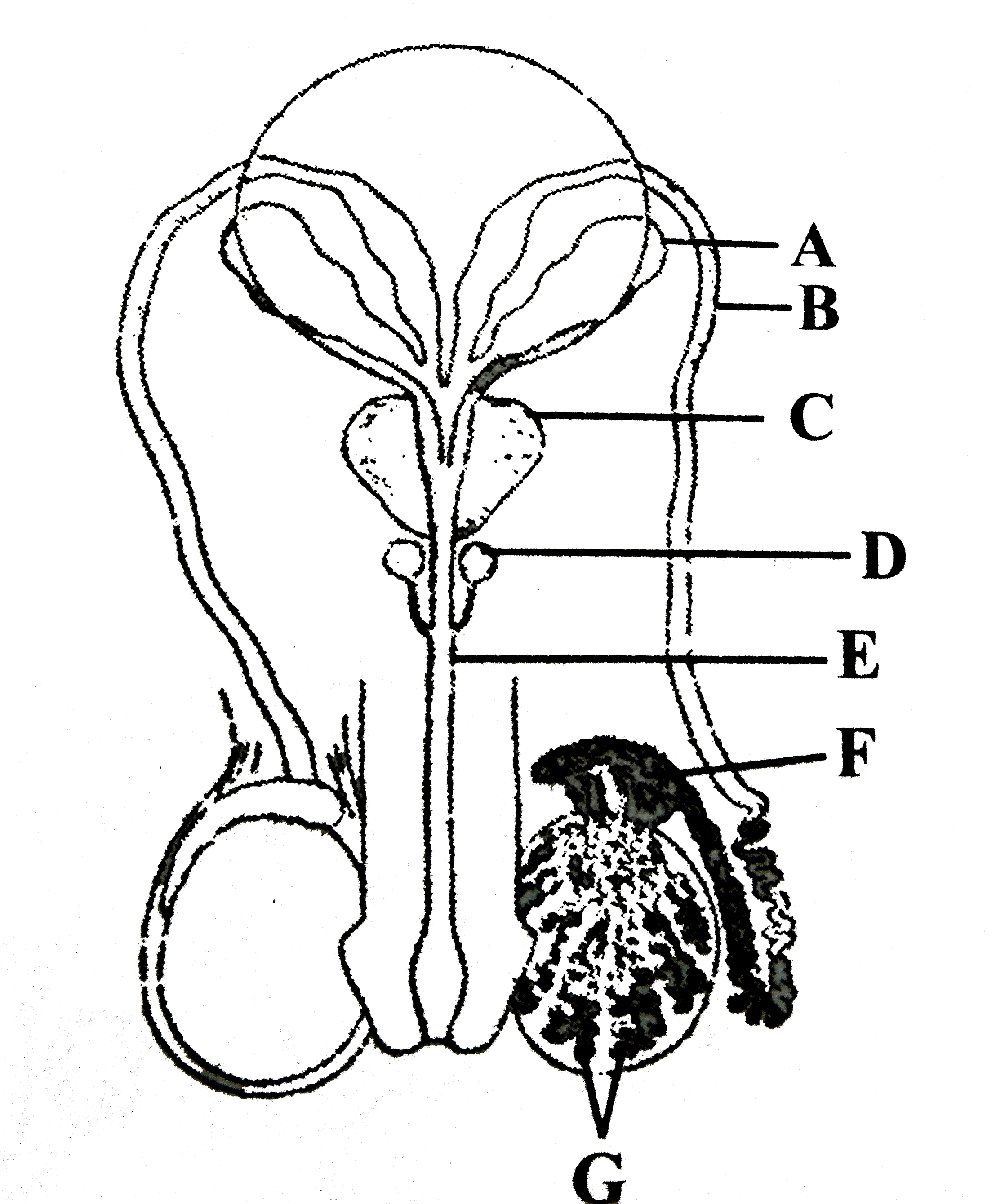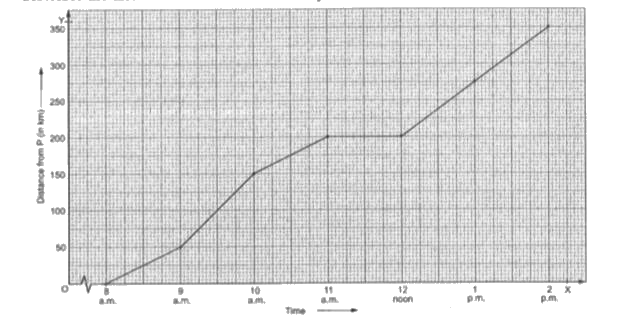Given below is the diagrammatic view of male reproductive system :-

(i) It is the place where functional maturation takes place _____.
(ii) Secretion of its makes seminal plasma and its also provides lubrication for copulation ____.
(iii)70% part of seminal plasma is formed by this gland ______ .
(iv) Secretion of its containing "Ca+2 and Po–34 ".
i - A, ii - B, iii - C, iv - D
i - B, ii - A, iii - D, iv - C
i - D, ii - C, iii - A, iv - B
i - C, ii - D, iii - B, iv - A
The correct Answer is:C
Step by step video, text & image solution for Given below is the diagrammatic view of male reproductive system :- (i) It is the place where functional maturation takes place _____. (ii) Secretion of its makes seminal plasma and its also provides lubrication for copulation ____. (iii)70% part of seminal plasma is formed by this gland ______ . (iv) Secretion of its containing "Ca^(+2) and Po_(4)^( –3) ". by Biology experts to help you in doubts & scoring excellent marks in Class 12 exams.
Updated on:21/07/2023Similar Questions
(a) Draw a sectional view of human female reproductive system and label the part where
(i) eggs develop
(ii) fertilsation take place.
(iii) fertilised egg gets implanted.
(b) Describe, in brief, the changes the uterus undergoes
(i) to receive the zygote.
(ii) if zygote is not formed.
View SolutionDraw a sectional view of human female reproductive system and label the following parts:
(i) Where the development of egg occurs.
(ii) Where fertilisation takes place.
(iii) Where fertilised eggs get implanted.
(b) Describe the changes the uterus undergoes :
(i) To receive the zygote.
(ii) If zygote is not formed.
View Solution
Knowledge Check
Consider the following three statements related to the human male reproductive system and select the correct option stating which ones are true (T) and which ones are false (F).
Middle piece of spermatozoon is also termed as power house of spermatozoon.
(ii) Vas deferens joins a duct from seminal vesicle and form vasa efferentia.
(iii) Semen is a collection of secretions from the seminal vesicles, prostate gland and Cowper's glands and sperms from testes.A(i)(ii)(iii)TFTB(i)(ii)(iii)FFTC(i)(ii)(iii)TTFD(i)(ii)(iii)FTTMatch each function below with the associated part or parts of the human male reproductive system shown in the figure.

(i) Produces sperm
(ii) Conducts the sperm through the penis to the outside of the body
(iii) Produces seminal fluid
(iv) Connects the epididymis with the urethraA(i)-G, (ii)-E, (iii)-A, C, D, (iv)-BB(i)−A,B,(ii)−E,(iii)−C,D,(iv)-GC(i)-G, (ii)-F, (iii)-A, B, C, (iv)-ED(i)−F,(ii)−E,(iii)−A,B,D,(iv)-CGo through the following statements
(i) Androgens are produced by the interstitial cells
(ii) Sertoli cells give rise to germ cells
(iii). Secretions of male accessory glands constitute the seminal plasma which is rich in fructose, calcium and certain enzymes
(iv) The presence or absence of hymen is a very reliable indicator of virginity.
Which of these are correct?Ai & iiiBiii & ivCi, iii & ivDall are correct
(a) In which part of the human female reproductive system do the following events take place ?
I-Release of 1st polar body
II-Release of 2nd polar body
III-Fertilisation
IV-Implanatation
(b) From where do signals for parturition originate and what does material pituitary release for stimulating uterine contrations for child birth ?
View SolutionDraw a neat diagram of human male reproductive system and label the parts: (i) the glands from which the secretion of fluid occurs for nourishment of sperms.
(ii) the tube which delivers the sperms formed.
(iii) the tube which forms common passage for both sperms and urine.
(iv) the cavity where testes are located. Name a sexually transmitted disease and a method to avoid it.
View SolutionA car is travelling from city P to city Q which are 350 km apart. The line graph given below describes the distances of the car from the city P at different times .

Study the above graph and answer the questions given below.
(i) What information is given on the two axes ?
(ii) From where and when did the car begin its journey ?
(iii) How far did the car go in the first hour ?
(iv) How far did the car go during (a) the 2nd hour and (b) the 3rd hour?
(v) Was the speed same during first three hours? How do you know it ?
(vi) Did the car stop for some duration at any place ? Justify your answer.
(vii) When did the car reach city Q ?
View SolutionName the human male reproductive organ that produces sperms and also secretes a hormone.
Write the functions of the secreted hormone.
(b) Name the parts of the human female reproductive system where
(i) fertilisation takes place,
(ii) implantation of the fertilised egg occurs.
Explain how the embryo gets nourishment inside the mother's body.
View SolutionName the human male reproductive organ that produces sperms and also secretes a hormone.
Write the functions of the secreted hormone.
(b) Name the parts of the human female reproductive system where
(i) fertilisation takes place,
(ii) implantation of the fertilised egg occurs.
Explain how the embryo gets nourishment inside the mother's body.
View Solution